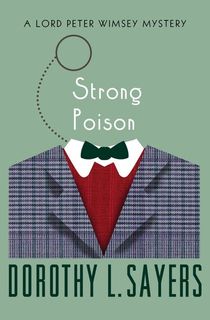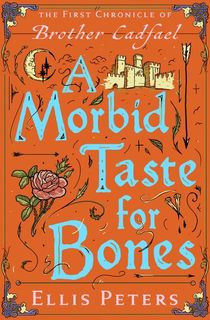When most people think of murder mysteries, they typically associate it with violent deaths and dark secrets, not romance. But look a little closer and you’ll find that the genre is bursting with romance interwoven into the plot, from jealousy and forbidden affairs to sleuths finding love on the job. Here’s a brief dive into the wonderful world of murder and romance, which go together better than you might think.
Related: Intimate Illusions: Mysteries and Thrillers About Marriages Gone Wrong
Love and the Golden Age of Detective Fiction
While romance in mysteries may go back further than the Golden Age, the Queens of Crime—women writers active in the 1920 and 1930s—brought love to the forefront in their novels. The best example of a detective couple is Dorothy L. Sayers’ Lord Peter Whimsey and Harriet Vane. While Lord Whimsey has several books of his own solo sleuthing, he really comes into his own when he meets Vane in Strong Poison, in which he attempts to clear her name after she’s accused of killing her ex-lover. There, the reader sees the beginning of his courtship with Vane. Subsequent books in the series tangle with ideas of love, identity, and marriage.
While Agatha Christie’s main detectives, Hercule Poirot and Miss Marple, are not married themselves, the books are filled with romance subplots. Many of Christie’s books have characters who are in love, but find themselves faced with unfavorable circumstances. This is particularly evident in the books featuring Miss Marple. She acts as a benevolent figure who solves the crime, which in turn allows the star-crossed couple to be together. And of course, there’s the few Christie mysteries led by sleuthing couple Tommy and Tuppence, who eventually fall in love and have children together.
The Tradition Continues: the 1970s to the 2010s
In a similar vein, Ellis Peters’ long-running Brother Cadfael series always seemed to have its side romances, starting with A Morbid Taste for Bones (1977). While Brother Cadfael’s days as a lover are over, this 12th-century crusader-turned-monk helps characters find love despite family feuds, murder/theft charges, class differences, and more. This theme of young lovers finally brought together is as old as storytelling itself; Shakespearean and subsequent English literature are rife with this idea, except in the case of mystery novels, it’s a side dish to the main event of murder.
But the most fun mystery romances tend to be the ones involving the protagonist. In Elizabeth Peters’ Amelia Peabody series, starting with Crocodile on the Sandbank (1975), Amelia, a spirited scholar of the Victorian age, finds love in the most unexpected of places: the man she thinks is the worst. It’s a dash of Pride and Prejudice or Much Ado About Nothing when two stubborn characters who have been at each other’s throats discover a newfound chemistry between them.
Romance and Murder in the Present Day
Murder mystery writers, especially in the cozy genre, have continued adding a dash of romance into their work. Many cozies tend to begin with the main character starting over after a failed job and/or relationship.
For instance, on page one of Mia Manansala’s culinary cozy Arsenic and Adobo, protagonist Lila Macapagal has returned home after she catches her boyfriend in the act of cheating. In a prior interview with Murder & Mayhem, Manansala said, “it was me playing around with the cozy mystery tropes. The whole first page was me just having fun. I love this genre but I also realize how ridiculous it can be and how much it pulled from rom com tropes.”
Many current writers are working those rom com tropes into their books, sometimes with a twist. For instance, Lefty Award-nominated writer Jennifer J. Chow adds a talking cat named Marshmallow into the mix in her cozy romance book Mimi Lee Cracks the Code, out on November 30, 2021. Chow loves the comedic element of it all: “It's sort of a love triangle. Marshmallow can say things to Mimi and obviously Josh doesn’t hear it...Josh misinterprets it or situations like that. Then also Marshmallow gets in some snarky comments [about] their human relationship…”
Gabby Allan, author of the “romcozy” Much Ado About Nauticaling, has her main character, Whitney Dagner, move back home to Santa Catalina Island. There, she has an unexpected run-in with her ex-boyfriend, who has recently taken a job as a diver for the police. The added worry of embarrassing herself in front of an ex spices up the tension. Allan asked, “How can I make her uncomfortable in a situation where she felt very comfortable? There's a number of rom coms that are built like that, where you think that you have moved on, and then something from your past comes back and bites you in the rear end.”
The romance also helps to move the plot along. Chow notes that, “In a typical cozy fashion, there are, but not always, often romantic relationships between the amateur sleuths and someone sort of connected to law enforcement.” That connection helps the sleuth get clues or information that may not have otherwise been received.
So why do other cozy writers add romance into their stories? For Allan, adding that romantic element helps younger readers in particular identify with the protagonists in the books. She says younger readers want to see more flawed sleuths whose troubles they can relate to, such as relationship challenges. Allan also notes that the romance “up[s] the emotional investment that the reader has. And [the reader] will want to stick around [to watch] these two people try to struggle through” solving the case.
Related: 15 Romantic Thriller Books That'll Make Your Pulse Race
Chow explains that murder mysteries are appealing because “love and sex are things that we deal with as people so it makes sense that it pops up in the mystery genre as well…Huge emotions get tied into love and death and so I think that plays out really well on the page and hooks into people's emotions.”
But it also helps make the character more fleshed out. Chow notes that a romantic interest can act as a foil for the main character and be someone they can bounce ideas off. “I hope people get a better perspective on the character through the romance,” she says, “because I think that makes the character more real. We don't really live in a bubble or sleuth in a bubble. So I think that helps to bring three dimensionality to character.”
Finally, having a romantic element helps to bring even more joy into murder mysteries. It helps to lighten up the darker elements of the genre, Chow says. But cozies tend to have happy endings with justice served anyway, Chow explains, so the romance adds to that sense of happiness and everything tying neatly together. After all, don’t we typically want to see our mysteries sealed with a kiss?



